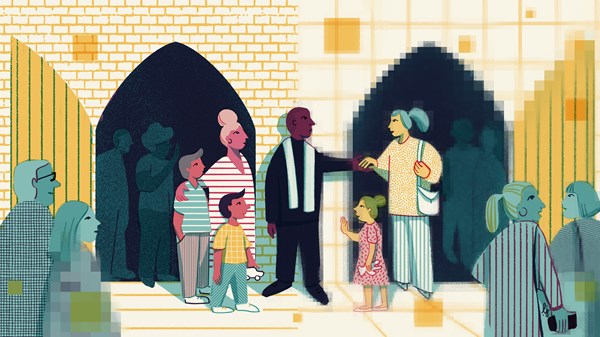When tragedy strikes a congregant’s personal life, pastors often become first responders. The same can be said when widespread calamities occur, such as natural disasters or social upheaval. Congregants and community members look to their local churches for assistance or for opportunities to volunteer in times of crisis.
Technology can play a key role in crisis management for churches, making their responses more efficient, comprehensive, and meaningful. Such tools help ministry leaders identify people in need, communicate with them, and effectively engage their situations. Technology is not the fix-all for crisis management. At the heart of a holistic response to tragedy is human connection and support. Technology can help take care of the logistical and administrative elements of crisis response so that church leaders and congregants can focus their time, energy, and resources on meeting spiritual, emotional, and physical needs.
Know the Needs: Identifying Opportunities to Serve
When a sudden event like a flood, earthquake, or tornado occurs, church leaders are immediately faced with two facts: first, there are people in need of help. Second, leaders and volunteers may not know how to find them. Faced with potentially overwhelming community needs, technology can help church leaders streamline their approach.
For example, a comprehensive church management solution will enable ministry leaders to identify congregants by geographical area at the push of a button. If a neighborhood is flooded or a part of town has been affected by a tornado, church leaders can quickly find and contact congregants who may have been affected. Speaking to these congregants quickly and hearing about their needs can help pastors establish and execute an effective response plan. Congregants in affected areas can also communicate about the needs of their neighbors and provide the church with opportunities to assist them.
Digital volunteer scheduling tools can be used to inform congregants about opportunities to serve and facilitate signups. With a comprehensive technology solution, volunteer scheduling tools can integrate directly with a church’s app. This allows congregants to sign up to serve in the same place where they learn about everything from upcoming Bible studies to the latest giving campaign update. Small groups can set their preferences to serve together, helping congregants experience meaningful time with one another after a community crisis has occurred.
Communicate with Clarity: Sharing Important Messages Through Digital Channels
In addition to providing ministry leaders with the information they need to engage their congregants and community in times of crisis, technology designed specifically for churches can remove the mayhem from mass communication.
Consider push notifications. Church leaders can craft quick messages to make announcements about disaster recovery projects, notify congregants of resources available to them, or send a simple word of encouragement to their suffering church. Rather than spending hours on an email that is far less likely to be seen than a notification, pastors can ensure that as many people as possible receive important information in a timely manner.
Texting provides another meaningful opportunity to tell congregants what they need to know. While some older generations of congregants may be less inclined to download a church app, they are likely to be able to receive a text message. Texts are a powerful way to bridge the divide between tech-savvy congregants and those who still think of their phones as, well, phones. Text messages can announce giving and outreach efforts that link directly to the church’s website, enabling a streamlined process that helps church leaders make the most of their time and allows congregants to participate in aiding their communities.
Keep it Confidential: Protecting Private Information
In times of chaos, people actively look for institutions and individuals who make them feel safe. Churches have long been one of the safe havens that receive the scared and hurting. Their use of technology can enhance that ministry in several powerful ways.
Recently, pastors at Christ’s Church of the Valley became aware of a deep sense of loneliness and hopelessness in their community. They decided to leverage their technology tools to launch a citywide initiative acknowledging and responding to mental health needs. Called Press On, the initiative invited community members to text “help” to the church. In response, the church offered financial assistance for mental health counseling. Over 4,500 people took them up on it, and ministry leaders shared resources, prayed with responders, and offered to pay for counseling. Digital tools also made it easy to tell the congregation about the campaign and invite them to make a donation toward the counseling fund through a secure link.
Through a one-on-one messaging solution, churches can offer congregants and community members the opportunity to share their needs, fears, or concerns directly and discreetly. Such a tool can provide a sense of spiritual safety as people are cared for one-on-one. It also delivers effective cybersecurity as messages are protected and only seen by the church leader or volunteer authorized to respond and a small team that fields incoming messages.
Lead Through Crisis with Confidence
Every community will at some point experience tough times. Responses from church leaders and congregants who make a meaningful, positive impact on their neighbors can lead those communities to recovery and healing. A comprehensive system like Pushpay’s church management software makes everything from backend administration to congregation-wide communication possible. When tragedies occur, church leaders can rely on Pushpay’s tools to facilitate connection with congregants, communication of important information, and the meeting of critical needs. Technology cannot replace personal, human ministry, but it can empower it.
Learn more about responding to tragedies with meaningful support through Pushpay’s free Leading Through Crisis ebook.


